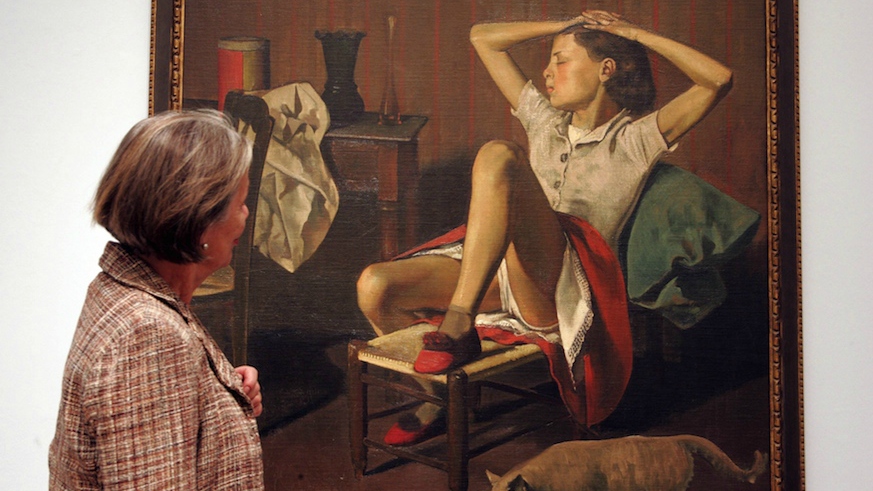A painting at the Metropolitan Museum of Art has come under scrutiny for depicting a young girl in a “sexually suggestive pose,” with thousands of people signing an online petition asking for the artwork’s removal from the museum.
“Thérèse Dreaming” by Balthus, painted in 1938, depicts a “pubescent model lost in thought,” according to the Met’s website. The girl sits with her hands behind her head, her one foot up on the chair, which causes her skirt to fall back and reveal her underwear.
More than 9,600 people have signed an online petition asking the museum to remove the painting from display. The petition describes the piece as an “evocative portrait,” with the petition creator specifically writing that, “It is disturbing that the Met would proudly display such an image.”
“The artist of this painting, Balthus, had a noted infatuation with pubescent girls,” Mia Merrill, the petition creator, wrote on the Care2 petition site, “and it can be strongly argued that this painting romanticizes the sexualization of a child.”
That romanticization is especially problematic, Merrill continues, in the light of recent sexual assault reports and allegations. Specifically, the allegations against Alabama Senate candidate Roy Moore, who is accused of initiating a sexual encounter with a 14-year-old when he was 31, come to mind.
When the Met hosted the exhibit “Balthus: Cats and Girls — Paintings and Provocations” in 2013, an article in the Guardian noted Balthus’s “inordinate fixation on girls who’d just hit puberty.”
As Merrill notes in the petition, the Guardian article then reads: “The Met, not imprudently, has put a plaque at the start of the show that reads: ‘Some of the paintings in this exhibition may be disturbing to some visitors.’ Only some visitors? They should disturb us all.”
Merrill has come under some criticism herself by those who say she is “censoring” art. In an update posted Tuesday, she added that she is not asking for the painting to be censored or destroyed, but for “the Met to be more conscientious in how they contextualize pieces.”
“This can be accomplished by either removing the piece from this gallery or by providing more context in the painting’s description,” she continued. “I would consider this petition a success if the Met included a message as brief as, ‘Some viewers find this piece offensive or disturbing, given Balthus’ artistic infatuation with young girls.'”
The Met will not be removing the image. In a statement, museum spokesman Ken Weine pointed to the Met’s mission to “collect, study, conserve, and present significant works of art across all times and cultures in order to connect people to creativity, knowledge, and ideas.”
“Moments such as this provide an opportunity for conversation,” he continued, “and visual art is one of the most significant means we have for reflecting on both the past and the present and encouraging the continuing evolution of existing culture through informed discussion and respect for creative expression.”


























